Traffic Signs
1/64
Earn XP
Description and Tags
Traffic signs and what their characteristics mean
Name | Mastery | Learn | Test | Matching | Spaced |
|---|
No study sessions yet.
65 Terms

Red means … ?
stop. do not enter. wrong way. yield.

Orange means … ?
construction and maintenance warning.

Yellow means … ?
general warning, advisory for unexpected roadway conditions.

FLOURESCENT Yellow Green means … ?
warning for school, pedestrian and bicycling activity.

White/Black means … ?
regulatory. control traffic, set limits or give commands.

Green means ... ?
guide or directional information.

Blue means … ?
driver guidance or to identify parking spaces for disabled people.

Brown means … ?
areas of public recreation, cultural or historical significance.
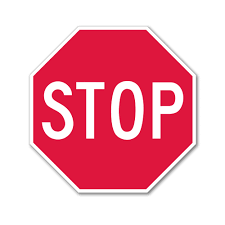
Stop Sign … ?
you MUST bring your vehicle to a complete stop. always stop before the stop line, a crosswalk, or intersection.
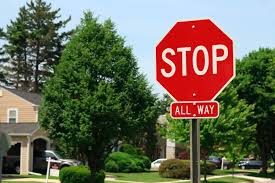
All The Way Stop … ?
traffic in all directions MUST stop. vehicles proceed through the intersection in the order that they arrived; the first vehicle to reach the intersection should move forward first. if vehicles arrive at approximately the same time, each driver must yield to the driver on their right.
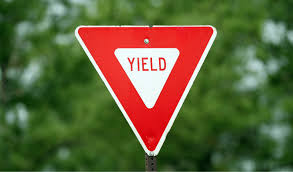
Yield … ?
slow down and give vehicles crossing your path the right-of-way. if clear, you may move forward - slowly, without stopping
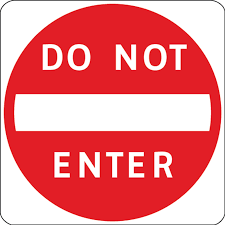
Do Not Enter … ?
one-way streets and roadways where you may NOT enter.
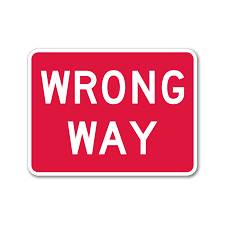
Wrong Way … ?
you are going the wrong way. turn around IMMEDIATLEY.
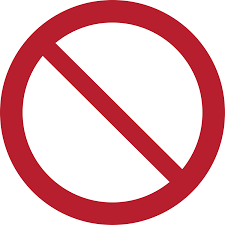
NO … ?
what you are not allowed to do
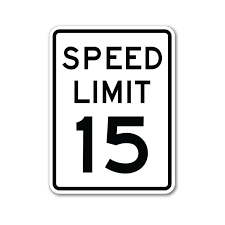
Speed Limit … ?
your speed must NOT exceed the limit posted in that area.
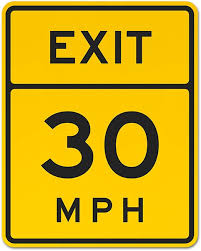
Exit Speed … ?
the maximum safe speed for an exit ramp on an expressway, slow down to posted speed.
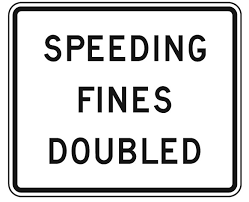
Speeding Fines Doubled … ?
posted in active school and work zones, your fine WILL be doubled if you are found speeding in these areas.

Turn Lanes … ?
at the intersection ahead, traffic in the left lane MUST turn left and traffic in the adjoining lane may turn left or continue straight ahead.
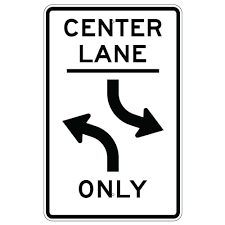
Center Turn Lane … ?
the center lane is shared, allowing left turns in both directions of travel.
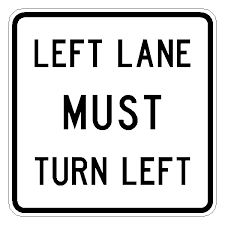
Left Lane Must Turn … ?
traffic in the left lane MUST turn left at the intersection ahead (also Right Lane Must Turn).
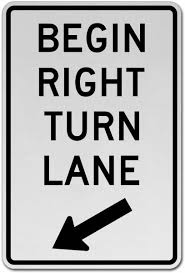
Begin Right Turn Lane … ?
when entering a right turn lane you may encounter bicyclists traveling straight; you MUST yield to the bicyclists.
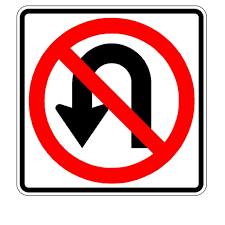
No U-Turn … ?
you must NOT make a complete turn to go in the opposite direction.

No Right Turn … ?
you must NOT make a right turn at this intersection (also No Left Turn).
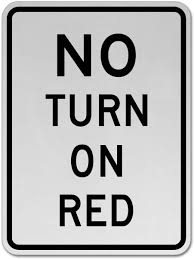
No Turn on Red … ?
you must NOT turn right or left during the red light. you MUST wait for the green signal.
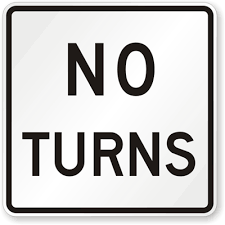
No Turns … ?
you must NOT turn either to the right or to the left at this intersection.
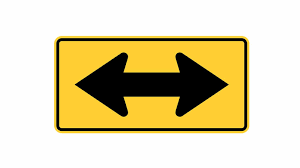
Must Turn … ?
you CANNOT go straight ahead. You MUST turn either to the right or left.
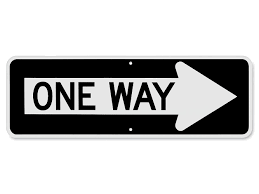
One Way … ?
you MUST travel only in the direction of the arrow.
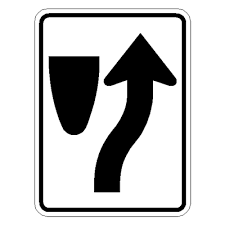
Keep Right … ?
stay to the right of the divider.
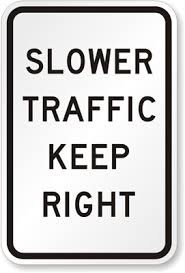
Slower Traffic Keep Right … ?
slower traffic MUST stay in the right lane unless passing. slower traffic MUST move out of the left lane when being overtaken by a faster vehicle.
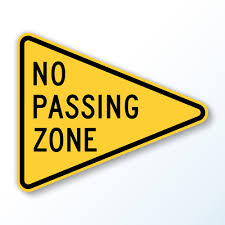
No Passing … ?
you may NOT pass another vehicle.
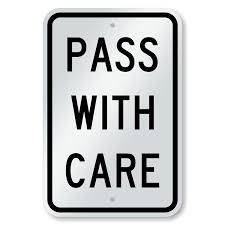
Pass with Care … ?
you are allowed to pass but do so with caution.

Restricted Lane Ahead … ?
a lane is reserved for certain purposes or certain vehicles, such as buses or carpool vehicles during rush hour traffic. also used in bike lanes.
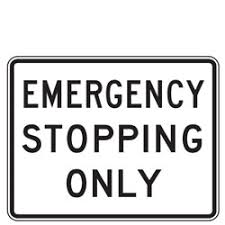
Emergency Stopping Only … ?
you MUST only stop for emergencies.
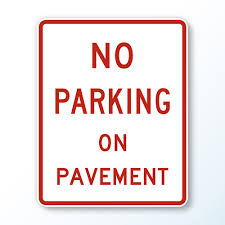
No Parking on Pavement … ?
if you stop, you MUST always park off the pavement of the roadway.
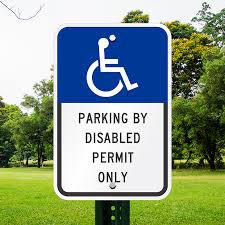
Parking by Disabled Permit Only … ?
parking in this space is ONLY for vehicles displaying an official disabled parking permit and transporting a person with a disability.
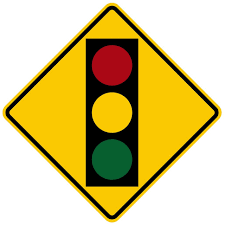
Traffic Signal Ahead … ?
a traffic signal is at the intersection ahead. Slow down; poor visibility is likely.
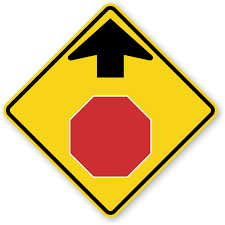
Stop Sign Ahead … ?
slow down and be ready to stop at the stop sign.

Yield Ahead … ?
yield sign ahead. slow down and be prepared to stop or adjust speed to traffic.
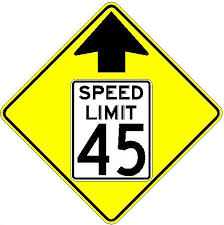
Speed Reduction Sign … ?
advance notice to upcoming speed limit change.
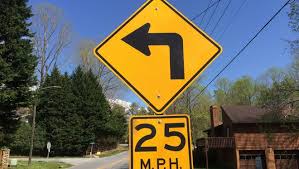
Advisory Speed Sign … ?
the fastest safe speed you should travel around the curve ahead. advisory speed signs may be used with any warning sign.

Two-Way Traffic Ahead … ?
the roadway is about to change to two-way traffic; there will be oncoming traffic.
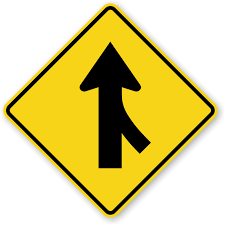
Merging Traffic Ahead … ?
ahead another traffic lane joins the one you are on. watch for other traffic and yield the right-of-way when necessary.
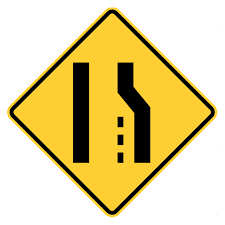
Reduction of Lanes … ?
the right lane ends and traffic must merge left. drivers in the left lane should allow others to merge smoothly.
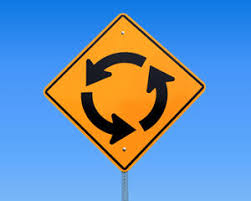
Roundabout Circle … ?
provides advance notice of a roundabout. prepare to slow down and possibly yield to traffic in the roundabout.
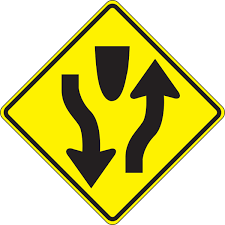
Divided Highway Ahead … ?
the highway ahead is divided by a median or physical barrier.
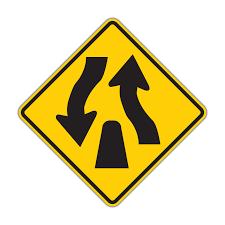
Divided Highway Ends … ?
the divided highway ends 350 to 500 feet ahead. you will then be on a roadway with two-way traffic. keep to the right.
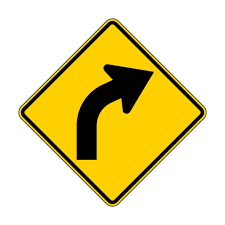
Right Curve … ?
the road will curve to the right. slow your speed and do not pass other vehicles.

Sharp Right Turn
the road will make a sharp turn to the right. slow your speed and do not pass other vehicles.
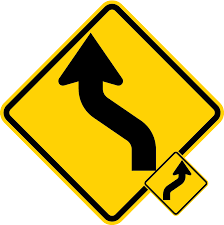
Reverse Curve … ?
the road will curve right, then to the left. slow your speed and do not pass other vehicles.
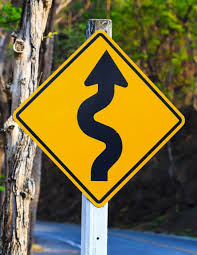
Winding Road … ?
there are several curves ahead. drive slowly and carefully and do not pass other vehicles.
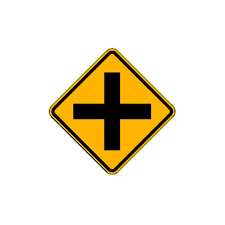
Cross Road … ?
a road crosses the main highway ahead. look to the left and right for other traffic.
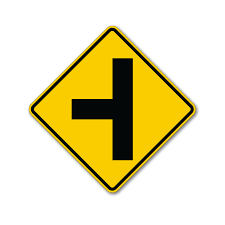
Side Road … ?
another road enters the highway from the direction shown. watch for traffic from that direction.
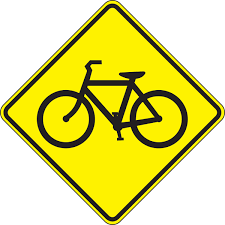
Bicycle Crossing … ?
a bikeway crosses the roadway ahead. watch for bicyclists.
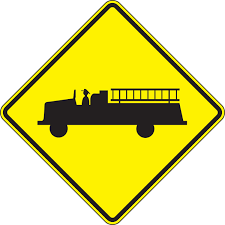
Emergency Vehicle Crossing … ?
watch for emergency vehicles entering or crossing the roadway.
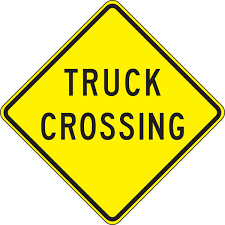
Truck Crossing … ?
watch for trucks entering or crossing the roadway.
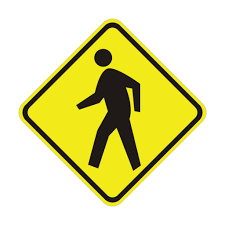
Pedestrian Crossing … ?
watch for people crossing the street. slow down or stop to yield for pedestrians.
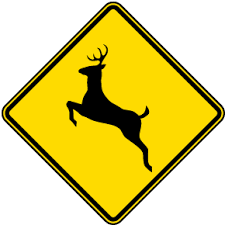
Animal Crossing … ?
the animal pictured on the sign is common in the area; watch for animals crossing the road particularly during twilight and at nighttime.
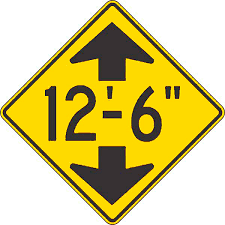
Low Clearance … ?
do NOT enter if your vehicle is taller than the height listed on the sign.
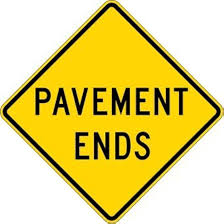
Pavement Ends … ?
the paved surface ahead changes to a gravel or earth road.
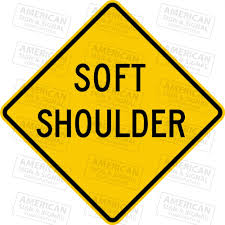
Soft Shoulder … ?
the ground on the side of the road is soft. don’t leave the pavement except in an emergency.
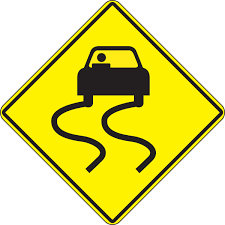
Slippery Surface … ?
in wet weather, drive slowly. don't speed up or brake quickly. make turns at slow speeds.
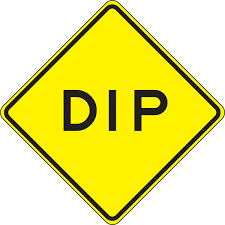
Dip … ?
there is a low place in the road. go slowly and be ready to stop and turn around if the dip is filled with water.
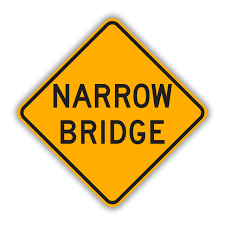
Narrow Bridge … ?
the bridge is wide enough to accommodate two lanes of traffic, but with very little clearance. stay in your lane.
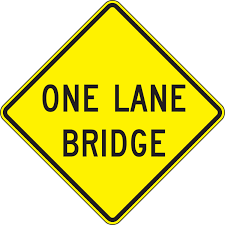
One Lane Bridge … ?
the bridge is wide enough for only one vehicle at a time. make sure the bridge is clear of oncoming traffic before you cross.

Hill/Downgrade … ?
the road goes downhill ahead. slow down and be ready to shift to lower gear to control speed.